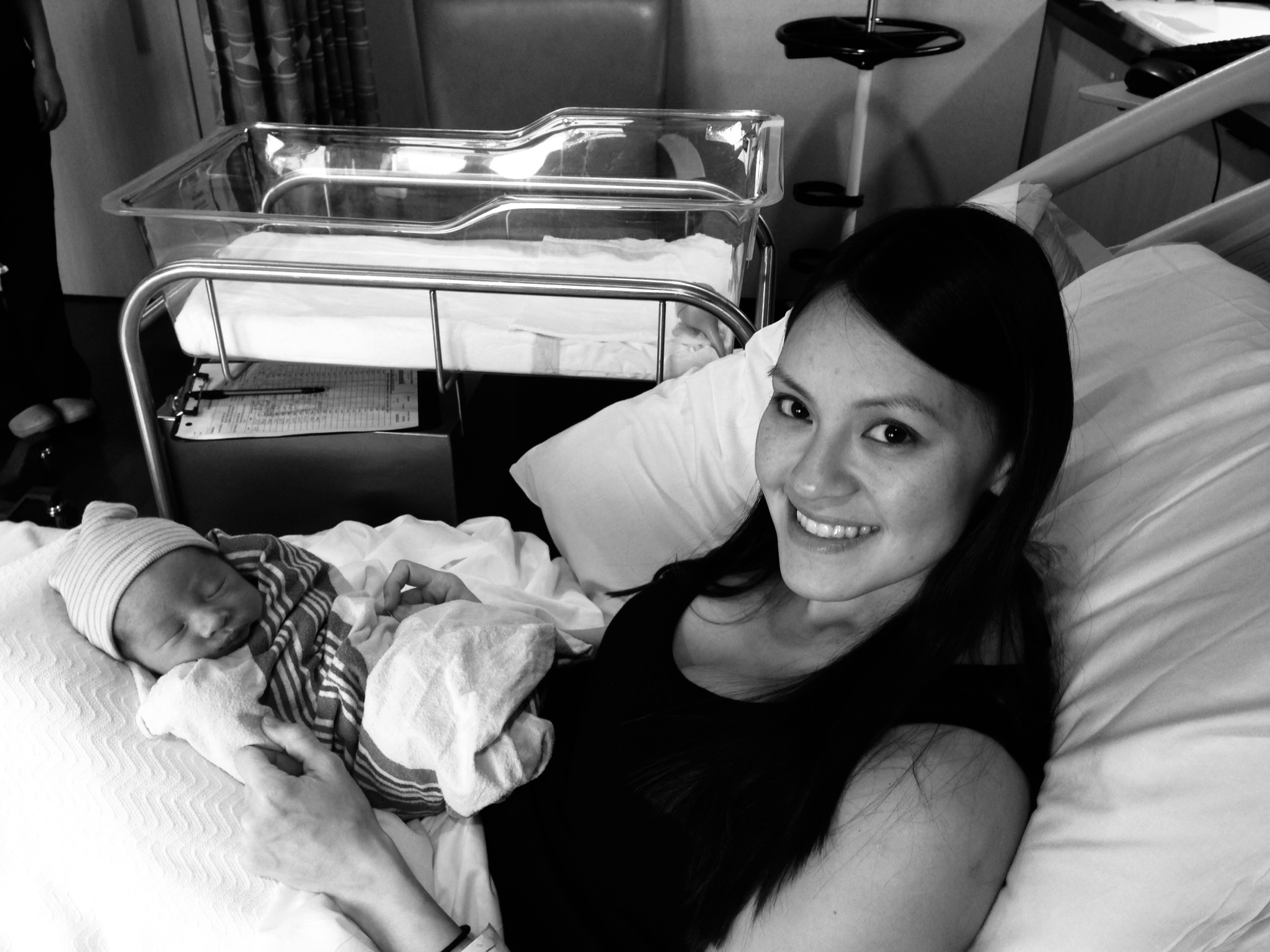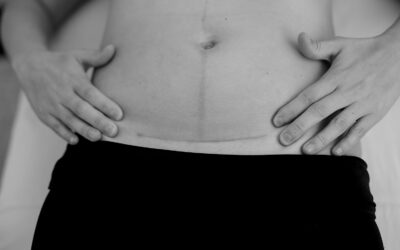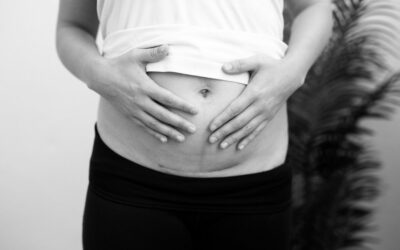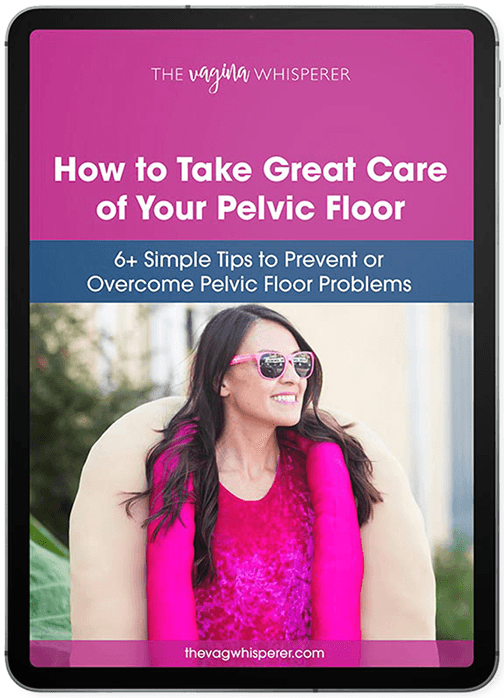There are many books on what to expect during pregnancy, but women often are left without much guidance about what to expect after the baby arrives. What should they expect from their bodies in the postpartum phase of motherhood?
Our physical therapy team hopes to provide women with answers to some of these questions. In an effort to provide women with answers to some of these questions, our team of pelvic floor physical therapists has written a three part postpartum blog series that covers what to expect in the various stages of your postpartum journey. We will be providing tips on how to reduce common complications, how to support your pelvic floor during this time, and things to look for that may require the help of a pelvic floor PT. In this first post of the series, we will be talking about the first two weeks postpartum.
Tips For Your Body During The First Two Weeks After Having A Baby
Congratulations! You had a baby…now what? Chances are you’re feeling a mixture of exhaustion, elation, and complete unpreparedness. Sure the nursery is ready and you have all of the necessary materials, but what the heck is going on with your body and how do you feel normal again? Let’s start with the basics.
How to Poop Properly After Giving Birth
You want me to do what?! Poop?! Let’s face it…your first bowel movement post baby can be both uncomfortable and difficult. Due to the amount of stress your pelvic floor just went through to birth your baby, it’s fatigued, sore, and not working quite right. So, pooping can take a lot of effort and can be pretty painful. To reduce any further stress, we recommend the following tips:
- Stay well hydrated. This will keep your bowels and other tissues lubricated so that it’s easier to keep that poop moving. It will also help with general healing and with nursing. It’s a win-win!
- Stool softeners or “Natural Calm” supplements can help keep you regular and keep your stool soft so that it is easier to void.
- Use of the squatty potty or kid’s stool will support your legs, open up your anal sphincter, and allow your pelvic floor to be more efficient.
- Exhale as you bear down to void, like you are blowing out birthday candles. This will help you be more efficient at voiding and bearing down so that you do not put more stress on your perineum.
- Support your perineum by using your hand. Using a wet wipe, toilet paper, or towel, place your hand just above your rectum and apply slight pressure upward into the perineum as you bear down. This will support the perineum and help prevent further stretching or tension to the perineum. This will be especially helpful for mommies who’ve experienced tearing or had an episiotomy.
How to Pee Properly After Birth
Similarly to pooping, peeing also can be uncomfortable during the first two weeks postpartum. Unlike pooping, peeing should be a relatively passive activity. In other words, you do not want to strain either to initiate urine or to empty your bladder fully. Straining or pushing to void urine can increase pressure on your already fatigued pelvic floor and potentially can worsen already existing vaginal wall weakness or prolapse. To ensure that you are not straining, use a stool to support your legs and utilize your breathing the same way you would for a bowel movement. The only difference here is that our focus will be on taking deep, abdominal breaths instead of blowing out candles. These deep abdominal breaths will help your pelvic floor to relax, thereby allowing your bladder to empty fully .
In addition to being mindful about how you pee, you will also need to be careful with how you clean the external tissues after urination. As you can imagine, your external vulvar tissues will be tender to the touch while they heal, especially if you had any tearing or an episiotomy. So, wiping will most likely be uncomfortable. Thankfully, the hospital or birthing center will send you home with a small squirt bottle you can fill with water and keep right next to your toilet. You can use this to cleanse the vulvar tissues and then gently pat them dry with toilet paper as needed.
Know When To Call A Pelvic Floor Physical Therapist
If you get stress or urge incontinence in between trips to the bathroom, do not be alarmed. This is common and should improve as you continue to heal. If it does not improve within the first few weeks, seek the help of a pelvic floor PT. We can assess your tissues to determine the underlying cause of the incontinence. However, it is not recommended you see a pelvic floor PT for the first 4-6 weeks postpartum. We want to ensure adequate healing time before any internal examination is performed. The same goes for exercise.
Avoid Lifting
Once home from the hospital or birthing center, avoid lifting as much as possible. When you do lift, utilize your breathing to help you activate appropriately. Deep, abdominal breaths to relax the pelvic floor and slow, controlled exhales (blowing out birthday candles) to activate your pelvic floor. This can be applied to lifting the car seat, lifting older children, lifting pets, groceries, laundry baskets, etc. Basically with everything!
Modification of how you are getting in and out of bed is important also. Sitting straight up will cause over activation of your larger abdominal muscles, increase intra-abdominal pressure and stress the connective tissue in your abdomen. This can put unnecessary stress on your pelvic floor and put you at risk for/worsen diastasis recti. To avoid these complications, try to log roll in and out of bed or on/off the couch. Do so by rolling onto your side, dropping your legs off the bed and using your arms to push yourself up into sitting. To go from sitting to lying, you do the same thing but in reverse. This will seem time consuming at first, but will become second nature very quickly. Trust me….your pelvic floor and your abdomen will thank you.
Rest Up, Mama!
Lastly, the most important thing to remember in the initial postpartum phase is REST! This can mean sleep, quiet time to yourself while your partner or family watches the baby, a warm bath or shower, or simply allowing others to help with cooking, laundry, and other daily activities. Allowing your body to get adequate rest will ensure it is able to perform the necessary healing to help you physically return to normal. Proper rest and sleep also will help reduce postpartum anxiety and depression. However, if you are struggling with anxiety or depression post-baby you should talk to your healthcare provider. Medication might be necessary and THAT IS OK! It is equally important to care for yourself as it is for your baby.
A Quick Guide To Kegels And Exercise after Birth
Although it is safe to begin gentle kegel contractions on the day your baby is born, more strenuous activity needs to be avoided for several more weeks. Starting some very gentle kegel contractions on day 1 will help get the blood flowing to your pelvic floor and will help the tissues heal, but do not be discouraged if there’s radio silence down there. These muscles are fatigued and still recovering, so you might not get much activation. That’s ok! Very gentle contractions will still get the blood flowing and promote ideal healing. In the same regard, it is important to avoid activities that will cause added stress to your pelvic floor. That means gentle kegels are pretty much all the exercise you should be doing in the first 2 weeks.
Once past the 2-week mark, we recommend walking for exercise. Return to more strenuous activity like yoga, Pilates, or bodyweight strength training can be done with guidance around 6 weeks postpartum. More high-intensity activities like Crossfit, powerlifting, and running should not be resumed for 3-6 months postpartum. As these activities require considerable coordination of your deep core, spinal stabilizers, and pelvic floor, we need to allow adequate healing time (8-12 weeks). This will ensure proper activation of these muscle groups during the above-listed activities.
If you have specific concerns or would like individualized guidance on return to activity, an evaluation by a pelvic floor PT can help determine your specific needs. The good news is that while waiting to return to these activities, there are still things you can do around the house to limit stress on your pelvic floor and begin retraining your core.
Personal Postpartum Recommendations From a Pelvic Floor PT
In closing, I’d like to leave you with a few pearls that I found helpful postpartum.
Maxi Pad Popsicles
When you have vulvar or perineal swelling, you can place this in your underwear for some relief.
What You Need: Aloe Vera gel, alcohol-free witch hazel, and jojoba oil
Here is How:
- Open the pad and put 1 tablespoon of Aloe Vera gel along the length of the pad.
- Place 2 tablespoons of alcohol-free witch hazel on the pad.
- Then place 1 teaspoon of jojoba oil on the pad.
- Repackage/fold the pad and place it in a ziplock bag.
- Place in the freezer until needed.
Hydration Makes For Happy Nursing
Grab the biggest water bottle you can find and make sure it’s always full (nursing causes unquenchable thirst). I also highly recommend Earth Mama Nipple Butter for more comfortable breastfeeding.
Sitz Bath To Soothe Your Lady Bits
Earth Mamma makes an amazing, organic sitz bath that can help bring relief to your sore perineal areas. You can also use their soak mix with my Maxi Pad Popsicles (see above).
Managing Hunger While Breastfeeding
High calorie/nutritionally dense snacks (avocado, nuts, nut butters, fruits, granola, yogurt) for you nursing mommas as you also will have an appetite like a ravenous beast.
Use Your Village / Support Group
This can be your partner, friends, family, other momma, etc. Regardless of who they are, lean on them. Lean on them hard. You will need them and they know that. It is ok to ask for help. I repeat…..IT IS OK TO ASK FOR HELP!
______________________________________________________________________________________________________
If you want to know more on how to take great care of your pelvic floor, get my FREE GUIDE with 6+ Simple Tips to Prevent or Overcome Pelvic Floor Problems.
______________________________________________________________________________________________________
Some links may be affiliate links. The products we recommend are products we use or recommend to clients.





